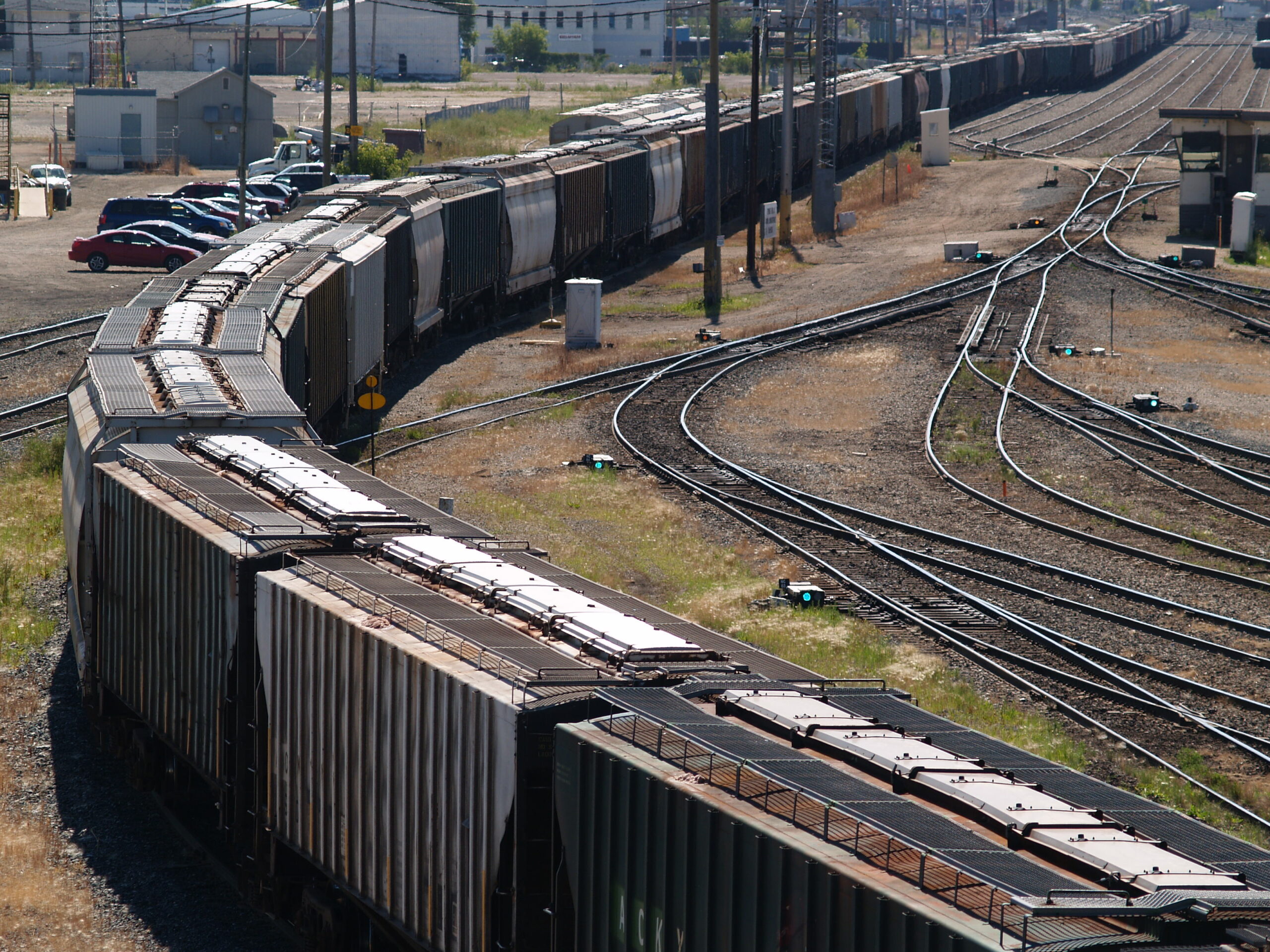
WASHINGTON — The Surface Transportation Board’s controversial service-based reciprocal switching proposal faced another round of criticism this week, with many shippers saying it doesn’t go far enough and railroads saying it’s an unworkable, unrealistic rule that goes too far.
The proposal, unveiled in September, would allow shippers located in terminal areas to seek access to a second railroad via reciprocal switch if the serving carrier failed to meet one of three performance standards over a 12-week period.
Railroads risk a reciprocal switch case if: They don’t deliver at least 60% of cars within 24 hours of the original estimate; average transit time increases by 20% to 25% compared to the prior year; and their success rate for spotting and pulling cars within a given service window falls below 80%.
Rail customers, in replies this week to an initial round of comments that were filed in November, expressed a wide range of views on the proposed rule.
Some shippers welcomed the rule, and backed it as written. Some sought much tighter on-time performance standards, saying the current proposal would do no good – noting that it would give railroads a 24-hour grace period on late deliveries.
Others said the proposal should serve as the foundation for a broad-based reciprocal switching rule that would allow many more sole-served shippers to receive service from a second railroad. And some said that the STB should boost competition by granting railroads trackage rights throughout terminal areas.
But shippers were united on one item: They said the service standards should apply to all rail traffic.
Railroads have argued that the STB lacks the power to impose service standards on shipments that move under contract or are commodities that are exempt from board regulation. Only about 5% of rail traffic would qualify if the rule applied only to traffic that moves under tariffs and involved regulated commodities.
“The most effective way to address inadequate rail service is to allow more competition through reciprocal switching,” a coalition that includes the American Chemistry Council, The Fertilizer Institute, and The National Industrial Transportation League told the board.
Shippers told the STB that railroads sought to neuter the proposal.
But railroads emphasized that contract moves should be exempt from service standards and regulation because Congress intended for contracts to replace government regulation as part of the Staggers Act of 1980. They also pushed back against shipper suggestions that the rule’s proposed 60% on-time performance standard be tightened.
The railroads also said that carload service is inherently variable due to a combination of factors that include swings in volume, seasonality of traffic, bad weather, dispatching decisions made by terminal railroads, and other third-party actions beyond the railroads’ control.
“Manifest carload networks are not designed to be assembly lines that use a fixed ratio of inputs to spit out identical and repeatable outputs day after day, week after week, month after month,” Canadian Pacific Kansas City wrote in its comments. “They are designed to adapt to varying inputs and other circumstances in ways that yield varying outputs as a matter of normal course. The fact that a network can achieve well in excess of 60 percent on-time performance on average says nothing about the likelihood that individual lanes will trip the Board’s thresholds as the result of routine and indeed planned variations in service performance.”
The Association of American Railroads said the original estimated time of arrival metric can’t by itself establish the need for a reciprocal switching order and that the measure should not apply to unit trains.














Under even present law, let alone in a reciprocal switch environment, how does a railroad “blow off the customer”?
Very simple. I see it every day in my profession as a railroader. They can make it prohibitively expensive to locate on the railroads property especially if that prospective customer intends to use the reciprocal rule in their favor. The railroads could not switch the customers that use the reciprocal rule to the point that they have no choice but to use other means to get their freight. There are are millions of very sneaky ways the railroads can easily circumvent laws put in place to keep them under wraps. They have whole departments dedicated to that fact.I’ve seen it a million times in my almost 3 decades in this very industry. They are very good spin doctors at giving this image that they are on the up and up.
I’m a very dedicated railroader and am proud of my profession but the underhanded stuff I’ve seen in my career dictates my doubt that they will be on the up and up if this switching stuff happens. I think it’s a great idea and would hold them to the fire to actually use competition as a means of commerce once again instead of power and strong arming the very
Customers we all depend on as railroaders to put food on our table.
The railroads will retaliate if they don’t get their way somehow no doubt about it. If reciprocal switching actually starts they’ll just blow off the customer that asks for it and the end result will be more trucks on the road.